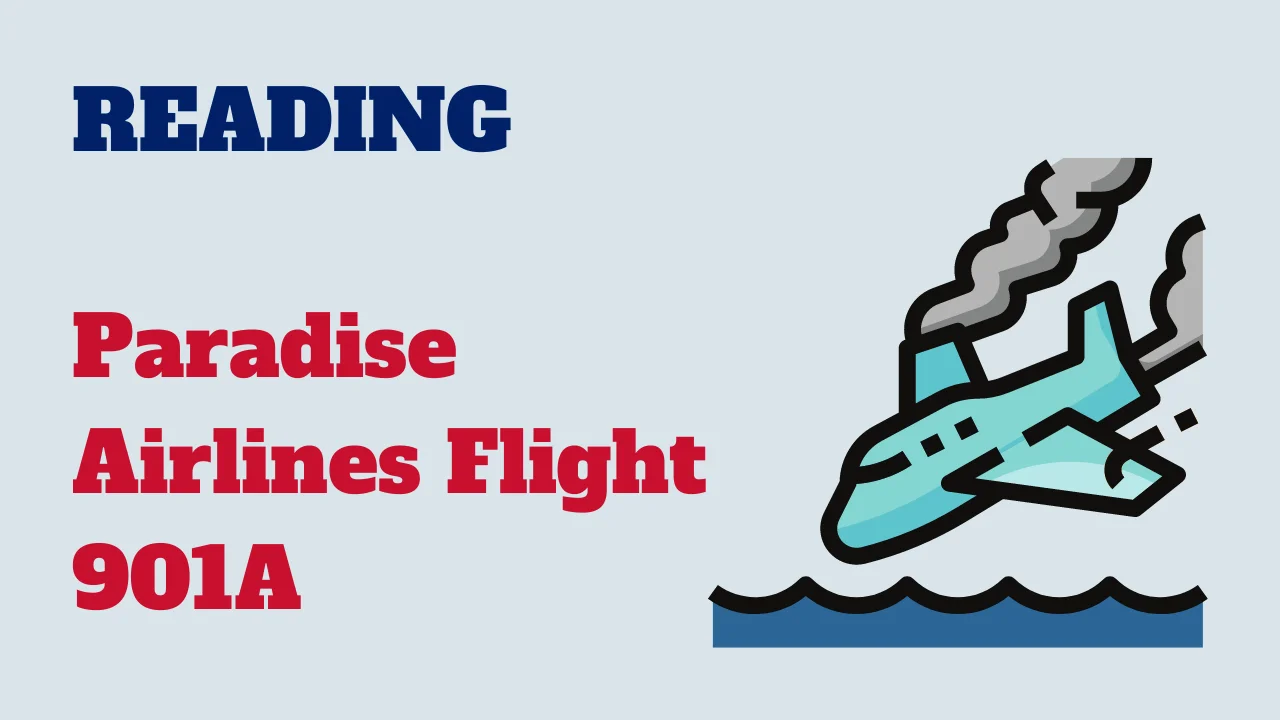In this reading activity, we will explore the tragic incident of Paradise Airlines Flight 901A, which crashed near Lake Tahoe on March 1, 1964. This event resulted in the loss of all 85 passengers and crew members aboard the Lockheed L-049 Constellation aircraft.

Let’s delve into the text to understand the circumstances surrounding the accident, its causes, and the aftermath.
Text: Paradise Airlines Flight 901A
Paradise Airlines Flight 901A was a tragic aviation accident that occurred on March 1, 1964. The Lockheed L-049 Constellation, operated by Paradise Airlines, was on a scheduled flight from San Jose, California, to Lake Tahoe, Nevada, carrying 81 passengers and crew members. The flight aimed to transport vacationers to the popular ski destination of Lake Tahoe.
The weather conditions at the time were severe, with heavy snow, strong winds, and poor visibility affecting the area. Despite these adverse conditions, Flight 901A proceeded with its approach to Tahoe Valley Airport. The pilot attempted to navigate through the challenging weather, relying on visual flight rules in a region known for its mountainous terrain and unpredictable weather patterns.
Tragically, the aircraft crashed into Genoa Peak, located in the Sierra Nevada Mountains, approximately 10 miles southwest of the airport. The impact site was at an altitude of about 8,700 feet, resulting in the instant death of all 85 people on board, which included 81 passengers and 4 crew members. The crash site was difficult to reach due to the harsh weather and rugged terrain, complicating rescue and recovery efforts.
The investigation into the accident revealed that the primary cause was pilot error. The pilot’s decision to continue the descent in poor visibility conditions without sufficient navigational aids contributed to the crash. The lack of modern navigation technology and the decision to fly under visual flight rules in such severe weather were critical factors.
The Paradise Airlines Flight 901A disaster highlighted the need for improved aviation safety regulations, particularly concerning weather conditions and navigational aids. It underscored the importance of adhering to instrument flight rules (IFR) in poor visibility and the necessity for better training and equipment to handle adverse weather conditions. The tragedy remains a somber reminder of the perils of aviation and the continuous need for advancements in safety measures.
Comprehension questions
Through this exploration of the tragic incident involving Paradise Airlines Flight 901A, we have gained insights into the circumstances, causes, and aftermath of the accident. The event underscores the importance of safety measures in aviation and the consequences of lapses in judgment or compliance.



